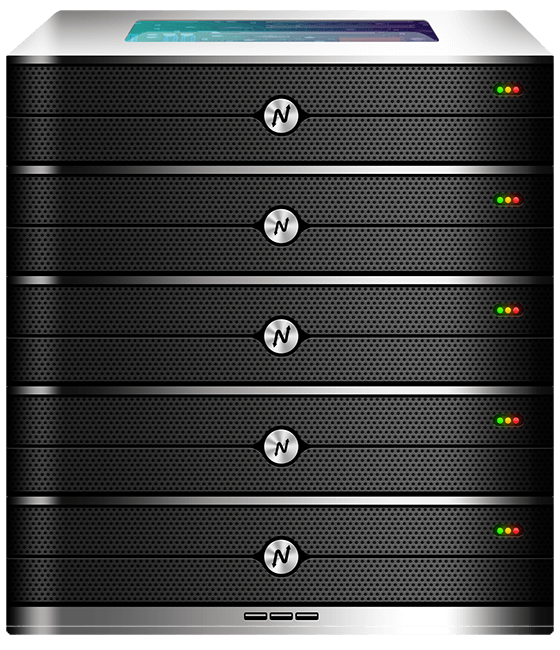Maintaining a website is more than a monthly hosting fee. From updates and backups to security and scaling, website maintenance costs shape your long-term budget and performance. This guide explains what drives those costs, why Indian hosting infrastructure can lower total spend, and how to pick the right plan so you won’t pay for resources you do not need.
Indian data centers have matured fast, offering cost-effective resources and low latency across Asia while staying competitive globally. They bring strong compliance and security practices, fast provisioning, and scalability that suits startups as well as international agencies. For teams watching their website maintenance costs, choosing an efficient hosting partner in India can reduce operating expenses without sacrificing speed or reliability.
- 1 Website Host
- 15GB SSD Storage
- 100GB Bandwidth
How website maintenance costs affect your budget
Understanding how website maintenance costs are structured helps you make realistic forecasts. Maintenance includes recurring hosting, domain renewal, backups, security scanning, software updates, content updates, and often developer time. Each element can be scoped and priced separately, but they add up quickly if you do not plan.
Hosting is the foundation. Shared hosting keeps initial costs low, while VPS and dedicated servers increase predictable resource spending for CPU and memory. A well-optimized plan reduces the developer time needed for fixes, which lowers long-term maintenance spend. If you choose an Indian hosting provider with fast provisioning and responsive support, you save hours on issue resolution.
Backups and security are non-negotiable. Skipping regular backups or automated updates increases the risk of downtime and costly recovery work. Investing in managed services or automated tooling reduces the chance of emergency fixes, which are more expensive than planned maintenance. Track all recurring expenses to calculate monthly and annual website maintenance costs, and update that budget as your site grows.
How to choose the right hosting plan for predictable website maintenance costs
Choosing the right plan is the single best way to control website maintenance costs. Start by listing your technical needs and traffic expectations. For a one-page brochure or portfolio, Mini Hosting plans such as Beginner — 1 Website, 1GB Storage, 5GB Bandwidth, $0.48 or Starter — 1 Website, 2GB Storage, 10GB Bandwidth, $0.84 keep hosting charges minimal.
If you manage several sites, Budget Hosting options like StartUpHost — 2 Websites, 5GB Storage, 25GB Bandwidth, $0.59 or GrowGrid — 5 Websites, 10GB Storage, 100GB Bandwidth, $1.19 distribute costs across projects and reduce per-site overhead.
For businesses that must balance uptime and cost, Shared Hosting plans such as Silver — 1 Website, 15GB Storage, 100GB Bandwidth, $1.79 or Gold — 3 Websites, 25GB Storage, 500GB Bandwidth, $2.39 are cost-efficient while offering better performance. Agencies and resellers often choose Diamond — Unlimited Websites, Unlimited Storage, Unlimited Bandwidth, $7.19 to simplify billing and maintenance.
If your site needs predictable compute or custom server stacks, KVM VPS plans provide clearer resource isolation and performance predictability, which can lower emergency maintenance. For detailed shared hosting specs and instant provisioning, check the XenaxCloud Shared Hosting page. Choosing the right plan up front reduces migrations and the surprise costs they generate.

Speed, uptime, and security advantages that reduce recurring costs
Faster, more reliable hosting directly reduces some categories of website maintenance costs. Pages that load quickly require fewer fixes to SEO or conversion drop-offs. Providers that offer built-in caching, NVMe storage, and HTTP/3 support lower the time you spend optimizing performance.
Uptime commitments and infrastructure redundancy reduce the risk of revenue loss during outages. A provider that documents redundancy in power, network, and storage saves you from paying external recovery specialists if something goes wrong. Security features like managed firewalls, DDoS mitigation, automated malware scanning, and free SSL certificates prevent incidents that would otherwise inflate maintenance bills.
Suggested place to add an outbound link: include a link to an independent hosting benchmark or CDN study in this section to back claims about latency and uptime. That evidence helps budget owners justify the initial hosting expense as a way to lower ongoing maintenance and recovery costs.
Comparison: Indian servers vs US, Canada, Germany, UAE
A regional choice affects latency, support, and operational overhead for maintenance. The table below compares core attributes that influence website maintenance costs across regions. Note: this comparison excludes pricing but focuses on service characteristics that drive recurring costs.
| Criteria | Indian Servers | US/Canada | Germany | UAE |
|---|---|---|---|---|
| Latency to Asia | Very Low | Moderate | Moderate | Low |
| Global Performance with CDN | Competitive | Very Strong | Very Strong | Good |
| Support Availability | 24/7 Local & Global | 24/7 (TZ caveats) | 24/7 (TZ caveats) | Region-focused |
| Provisioning Speed | Fast / Instant | Fast | Fast | Moderate |
| Maintenance Overhead | Lower for Asia-focused sites | Lower for NA-targeted sites | Lower for EU-targeted sites | Moderate |
Choosing an origin close to your core audience lowers the complexity of caching rules and geographic routing, which reduces operational maintenance. Indian servers often cut support-response delays for Asian customers, reducing the time you pay for hands-on fixes.
Real-world use cases: mapping costs to outcomes
Small business owners: A local restaurant or services business can use Silver — 1 Website, 15GB Storage, 100GB Bandwidth, $1.79 and schedule light monthly updates. Their predictable website maintenance costs include domain renewal and a monthly backup add-on, keeping total spend low while ensuring availability.
Ecommerce merchants: Online stores need frequent updates, inventory sync, and PCI-compliant security. Starting on Platinum — 10 Websites, 100GB Storage, 1000GB Bandwidth, $4.19 or a KVM VPS 3 — 8 Vcore CPU, 32GB RAM, 80GB Storage, 5TB Bandwidth, $17.99 reduces unexpected scaling work. Predictable compute means fewer emergency developer hours, which lowers long-term maintenance costs.
Agencies: Agencies that manage dozens of client sites can choose Diamond — Unlimited Websites, Unlimited Storage, Unlimited Bandwidth, $7.19 or reseller hosting with cPanel + WHM to consolidate billing and automate updates. Consolidation simplifies updates and patches, reducing time spent on repetitive maintenance.
Developers and CI pipelines: SPEED KVM VPS plans like KVM VPS 3 — 8 Vcore CPU, 16GB RAM, 70GB Storage, 4TB Bandwidth, $14.39 support fast builds and staging environments. Investing in faster VPS hardware reduces wasted developer time and therefore lowers hourly maintenance costs.
Each case shows how selecting the appropriate plan directly trims recurring maintenance spend by reducing manual fixes and downtime.
Why Indian servers can handle global traffic efficiently and lower maintenance risk
Indian hosting providers have invested in improved network interconnects and multiple submarine cable paths. This means fewer hops to major Asian backbones and lower latency to nearby regions. When combined with global CDN usage, static files are cached at the edge while dynamic requests are served efficiently from the origin.
From a maintenance standpoint, this architecture reduces the need for complex geographic load balancing and troubleshooting. For many global audiences, an Indian origin plus CDN is sufficient, keeping operations simpler and cheaper. Instant provisioning capabilities common with modern Indian providers let teams spin up additional instances quickly during campaigns, reducing frantic emergency responses that inflate website maintenance costs.
Operationally, robust local support available in similar time zones shortens incident response windows. That reduces billable engineering hours for troubleshooting and accelerates remediation.
Scalability options for startups and agencies to control long-term costs
Scalability planning is the backbone of predictable website maintenance costs. Startups should select plans with clear upgrade paths. For example, begin with Gold — 3 Websites, 25GB Storage, 500GB Bandwidth, $2.39 and move to KVM VPS 2 — 4 Vcore CPU, 16GB RAM, 50GB Storage, 4TB Bandwidth, $10.79 when traffic grows. This approach minimizes migration friction and avoids emergency lift-and-shift costs.
Agencies should consider reseller hosting with cPanel + WHM to standardize deployments and automate backups and updates. For higher compute requirements, GOLD KVM VPS 5 — 16 Vcore CPU, 32GB RAM, 100GB Storage, 8TB Bandwidth, $25.19 provides predictable performance and reduces per-client maintenance surprises.
Autoscaling capabilities, where available, reduce manual intervention during traffic spikes. If autoscaling is not part of your stack, design for vertical scaling with snapshot-based migrations so upgrades are affordable and fast. A well-documented upgrade route visible on the provider’s site cuts administrative and developer time, controlling costs over months and years.
FAQ
What is the difference between Indian VPS and foreign VPS?
Indian VPS often delivers lower latency to Asian users and competitive global reach due to local peering and improved backbone routes.
Can Indian servers handle global website traffic?
Yes, when combined with CDN caching and optimized routing, Indian servers efficiently serve global audiences.
Is Indian hosting cost-effective for international users?
Often yes; Indian hosting typically offers more resources per dollar while maintaining competitive performance and support.
How reliable is XenaxCloud hosting?
XenaxCloud provides robust uptime, 24/7 support, and clear upgrade paths that reduce maintenance surprises.
How to choose the right server for my business?
Assess traffic, platform needs, and maintenance capacity, then pick a plan with a clear, low-friction upgrade path.
Recommended XenaxCloud plans to minimize website maintenance costs
For single-site owners and portfolios: Beginner — 1 Website, 1GB Storage, 5GB Bandwidth, $0.48 or Starter — 1 Website, 2GB Storage, 10GB Bandwidth, $0.84.
For growing blogs and small businesses: Silver — 1 Website, 15GB Storage, 100GB Bandwidth, $1.79 or Professional — 1 Website, 5GB Storage, 20GB Bandwidth, $1.20.
For agencies or multiple sites: Gold — 3 Websites, 25GB Storage, 500GB Bandwidth, $2.39 or Diamond — Unlimited Websites, Unlimited Storage, Unlimited Bandwidth, $7.19.
For eCommerce and predictable compute: Platinum — 10 Websites, 100GB Storage, 1000GB Bandwidth, $4.19 or KVM VPS 3 — 8 Vcore CPU, 32GB RAM, 80GB Storage, 5TB Bandwidth, $17.99.
For high performance and scaling: GOLD KVM VPS 5 — 16 Vcore CPU, 32GB RAM, 100GB Storage, 8TB Bandwidth, $25.19 or SPEED KVM VPS 6 — 20 Vcore CPU, 40GB RAM, 120GB Storage, 10TB Bandwidth, $29.99.
For full shared hosting details and quick provisioning, visit the XenaxCloud Shared Hosting page and pick the plan that aligns with your expected maintenance profile: https://xenaxcloud.com/shared-hosting/
- 1 Website Host
- 15GB SSD Storage
- 100GB Bandwidth
Conclusion
Tracking and planning for website maintenance costs is essential to keep your site secure, fast, and affordable. Choosing the right hosting plan reduces emergency fixes, shortens support response times, and lowers long-term operational spend. Indian hosting infrastructure offers cost-effectiveness, low latency in Asia, strong security and compliance, and easy scalability that helps international businesses control maintenance overhead.
XenaxCloud provides clear upgrade paths from Mini Hosting to VPS and dedicated servers, backed by 24/7 support and fast provisioning. Try a plan risk-free with the 15-day money-back guarantee and check current promotions on the XenaxCloud Offers Page: https://xenaxcloud.com/offers
Take action today: pick a XenaxCloud plan that matches your needs and lock in predictable website maintenance costs so you can focus on growth.






